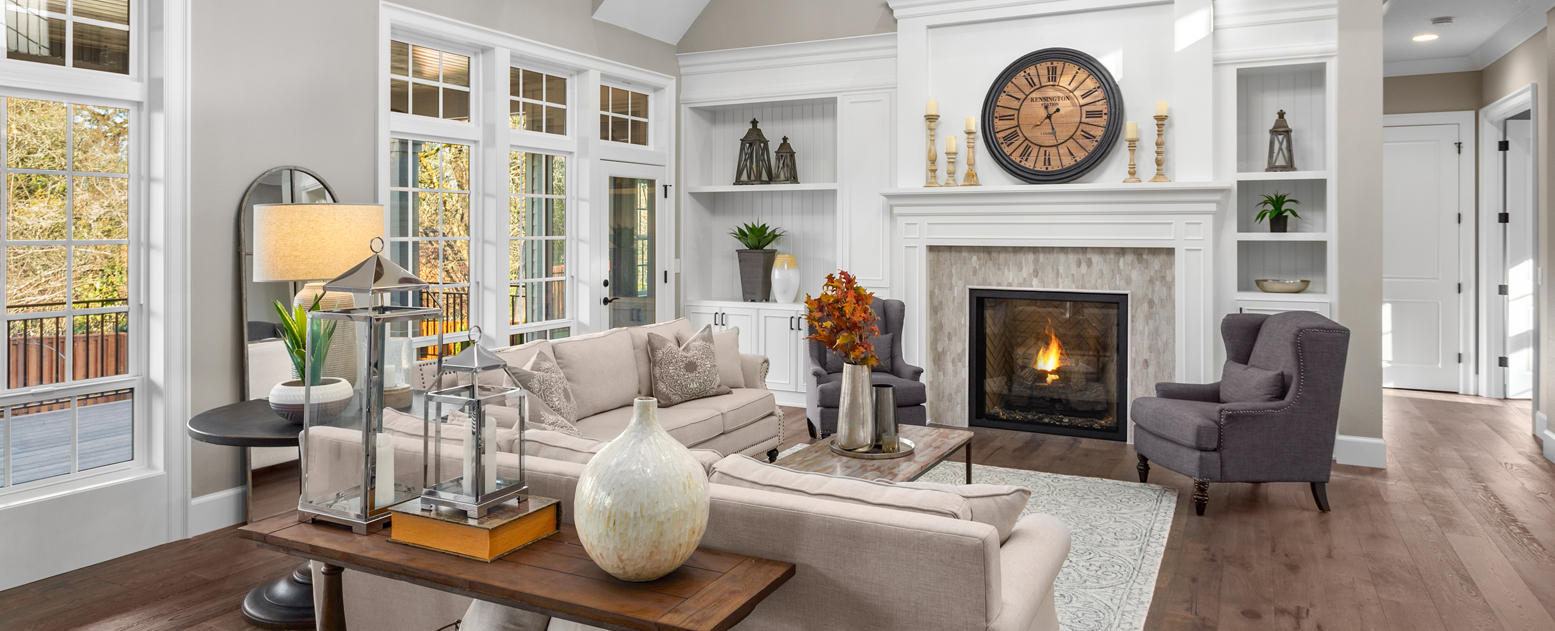Lighting Tips for Challenging Two-Story Spaces
A dilemma for many of my Howard County clients is adequately lighting two-story foyers, family rooms and dining rooms. I would like to share some tips with you on how you can light these spaces to bring high-level function and true character to rooms that would otherwise feel empty or incomplete.
For exceptionally grand foyers that are nearly as wide as they are tall, you can choose a lighting fixture that is three feet wide by four feet tall and it won’t look out of place. The main challenge with fixtures of this scale is learning what your options are (they are endless and gorgeous!) and then determining how to procure it through a designer, showroom or website. The more frequent challenge is the two-story foyer that is much taller than it is wide. So where do you begin?
A basic rule is to measure the width of the room in feet, double the number and then make that inches. In the example of an 8 foot wide room, you would want a fixture at least 16 inches wide. You can also go wider but be aware of the scale. In most cases, 24 inches would be too wide. Many manufacturers have fabulous designs that can accommodate these dimensions with fixtures that are 18 to 48 inches tall, but not too wide or bulky. They may be narrow chandeliers, or cylindrical shapes, or lantern styles with open frames that don’t have a lot of visual weight.
One of the most exciting developments in recent years is the use of LED in fixtures meant for large spaces. In a traditional fixture, the design is limited to where the bulbs can be placed. The diodes of LED can be placed anywhere for incredible flexibility of design. I’ve seen 8 foot tall spirals, like corkscrews, and long, thin vertical elements, even stick-like shapes. With LED, the entire fixture illuminates, not just where you would normally see a bulb. Lighting manufacturers are hiring designers and engineers right out of college, which has brought some ingenious designs to the industry.
For any two-story space manufacturers can modify the electrical cord and chain to greater length. This is necessary in a two-story dining room where the fixture is hanging over the table. In a standard height dining room, the light usually hangs no more than 36 inches above the table, but this rule can be broken for a two-story room. A functional and dramatic solution for this situation are multiple, staggered height pendants hanging from a central canopy, what are called “multiple port openings.” This design can fill and light the space much better than a multi-bulb chandelier hanging from a single cord. (See the photo, from manufacturer Tech Lighting) Again, LED offers a lot of flexibility in design. Look for the term “linear suspension” if you decide to do an online search.

Another option is track lighting, and it has become more popular than ever due to advances in low-voltage wiring. Imagine, instead of the thick track and clunky lighting cans, nearly transparent wire cabling just 1/8 or 1/4 inch in diameter, which is then mounted to the wall or ceiling using “stand-offs.” Small lights are then clipped to the cable wire and can provide wonderful ambient light as well as spot lighting (to accent a fireplace or artwork), and can also be used with pendants for task lighting.
One of the biggest challenges for a two-story family room is how to have adequate overhead lighting and also control the temperature in the room. The best solution is to select a ceiling with a light fixture, with a stem that extends from the ceiling at least 3 feet and up to 8 feet. This will optimize both air flow and ambient lighting of the room. You can change the direction of the blades to push warm air down in the winter and pull cool air up in the summer. If the light fixture is compatible for LED bulbs, they can bring from 40,000 to 60,000 hours of use, and they won’t need replacing for many years.
If you want cozy and inviting rooms, don’t rely on just overhead lighting. Mid-level fixtures are equally important to layer the lighting and bring brightness to eye level. Wall sconces, floor lamps and table lamps fall into this category, all of which can add personality and complement the design style of the room.
Lighting fixtures are not only functional and essential elements, but can be conversation pieces unto themselves. They can also be exciting and dramatic when they contrast with the style of the room, for instance, sleek contemporary lighting can be spectacular in a room with very traditional details, moldings and furniture.
If you would love to light up your home but aren’t sure where to start, contact me for a custom lighting plan. It might be just what your home needs to shine!


